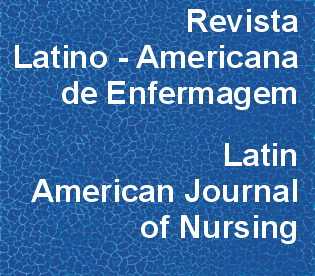Prevalent nursing diagnoses and interventions in the hospitalized elder care
DOI:
https://doi.org/10.1590/S0104-11692008000400009Keywords:
nursing, care, nursing process, nursing diagnosis, hospitalization, elderAbstract
OBJECTIVES: to identify the prevalent nursing diagnoses (ND) in the hospitalized elder care; to compare the prevalent ND with the duration of hospital stay and with the prescribed cares for their respective diagnoses. METHOD: Transversal historical study carried through in Porto Alegre, RS, by analyzing patient records age e60 years old, interned in clinical unities of a university hospital. RESULTS: 1665 records were analyzed; the four prevalent NANDA nursing diagnoses - within 62 identified ones - were: Self-Care Deficit - Bathing/Hygiene, Imbalanced Nutrition - Less than Body Requirements, Risk for Infection and Ineffective Breathing Patterns, varying from 14 to 17 days of hospital stay. THE MAIN CARES WERE: aiding bed bath, communicating diet acceptance, implementing routines of care in venous puncture and checking respiratory pattern. CONCLUSION: four prevalent ND were identified with the appropriate prescribed care. However, other care could have been established as a priority.Downloads
Download data is not yet available.
Downloads
Published
2008-08-01
Issue
Section
Original Articles
License
RLAE’s authorship concept is based on the substantial contribution by each of the individuals listed as authors, mainly in terms of conceiving and planning the research project, collecting or analyzing and interpreting data, writing and critical review. Indication of authors’ names under the article title is limited to six. If more, authors are listed on the online submission form under Acknowledgements. The possibility of including more than six authors will only be examined on multicenter studies, considering the explanations presented by the authors.Including names of authors whose contribution does not fit into the above criteria cannot be justified. Those names can be included in the Acknowledgements section.
Authors are fully responsible for the concepts disseminated in their manuscripts, which do not necessarily reflect the editors’ and editorial board’s opinion.
How to Cite
Prevalent nursing diagnoses and interventions in the hospitalized elder care. (2008). Revista Latino-Americana De Enfermagem, 16(4), 707-711. https://doi.org/10.1590/S0104-11692008000400009



